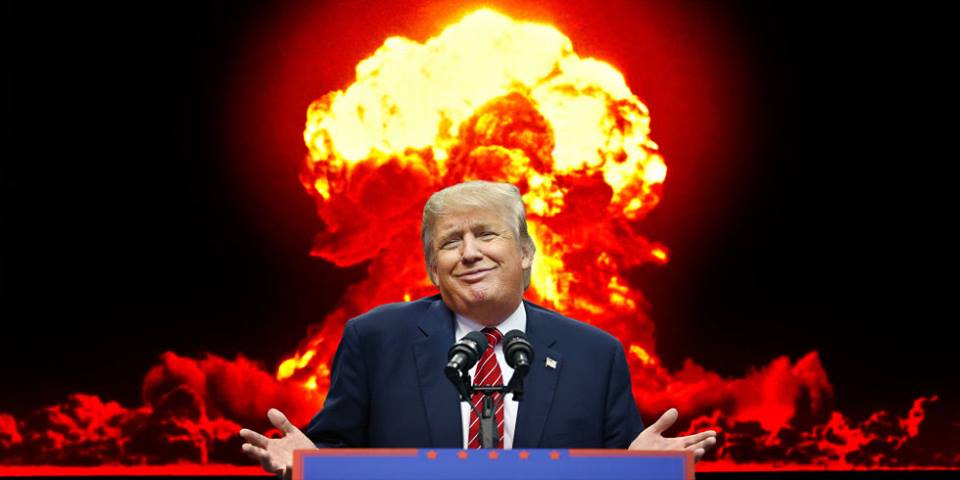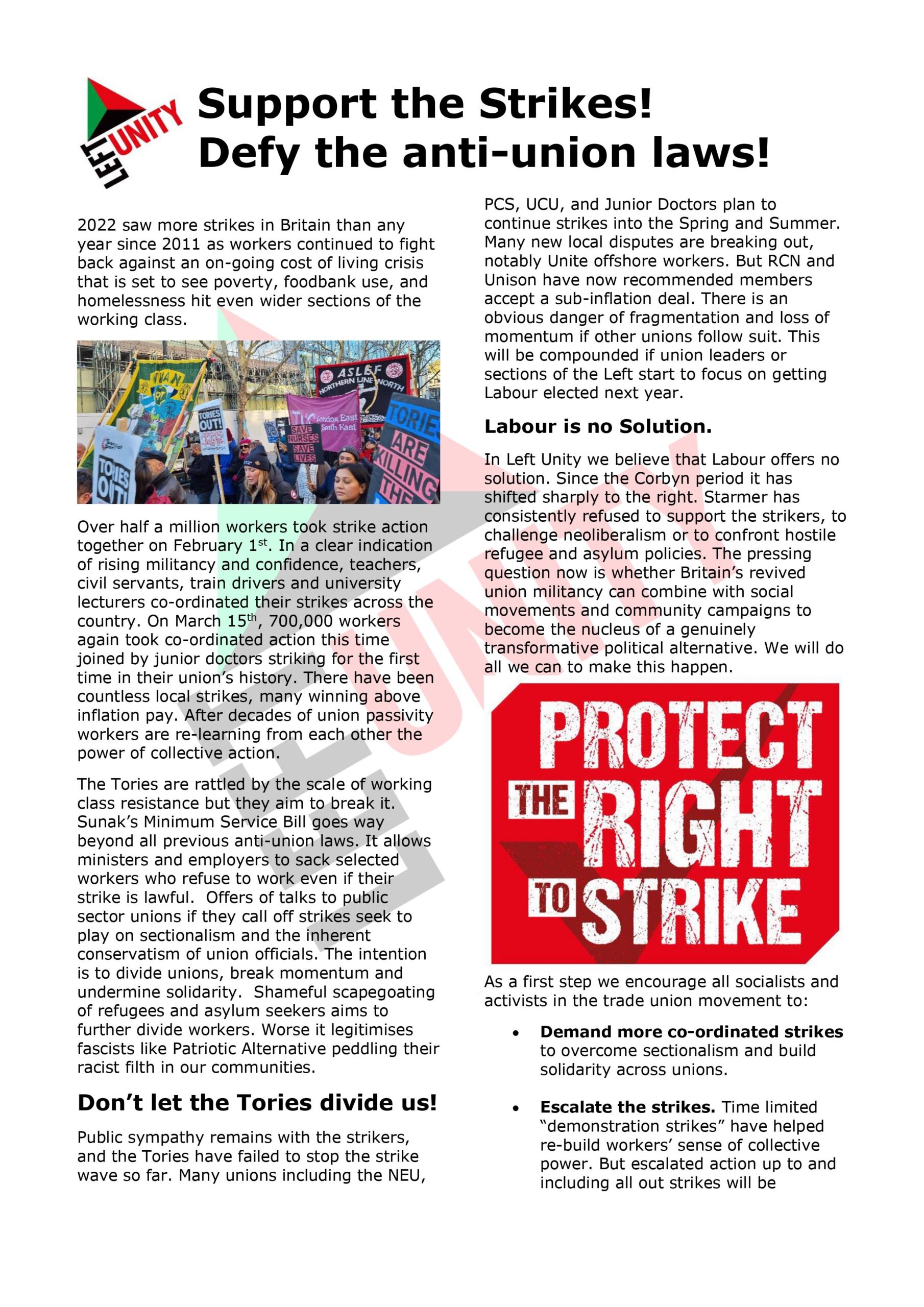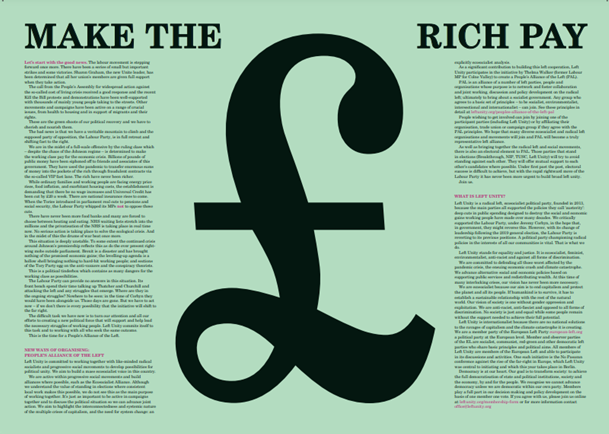A new nuclear arms race looms
 As we approach the 74th anniversary of the catastrophic bombings of Hiroshima and Nagasaki, the risk of accidental or intentional use of nuclear weapons remains significant, writes Kate Hudson. Today almost 14,000 nuclear weapons still threaten the survival of the world, including the UK’s Trident nuclear weapons system. Only nuclear abolition will allow for a secure future for all peoples.
As we approach the 74th anniversary of the catastrophic bombings of Hiroshima and Nagasaki, the risk of accidental or intentional use of nuclear weapons remains significant, writes Kate Hudson. Today almost 14,000 nuclear weapons still threaten the survival of the world, including the UK’s Trident nuclear weapons system. Only nuclear abolition will allow for a secure future for all peoples.
Yet on August 2nd, the Intermediate-Range Nuclear Forces Treaty (INF) was terminated, following US withdrawal from the Treaty six months ago. This is a dangerous and destabilising development with the potential to take us back to the worst days of the Cold War. It unleashes the possibility, not only of a spiralling nuclear arms race, but of greater numbers of US nuclear weapons coming to Europe. At a time when President Trump’s recent new Nuclear Posture Review commits to ‘usable’ nuclear weapons, and his Defence Strategy ramps up the conflict with Russia and China, this is very bad news.
Signed by Reagan and Gorbachev in 1987, the INF treaty banned ground-launched nuclear missiles with ranges from 500km to 5,500km and led to nearly 2,700 short- and medium-range missiles being eliminated. It meant cruise missiles were removed from Britain and Pershing, cruise and SS-20 missiles from continental Europe. Tearing up the INF Treaty marks the end of those restraints on nuclear arsenals achieved in the 1980s. It will open the way for the return of cruise-type missiles to Europe – and the increased potential for nuclear war on our continent. This would once again increase the likelihood of a nuclear war being fought on European soil. Russian leader Vladimir Putin has already stated that if European countries host US intermediate-range missiles, these countries ‘must understand that they are putting their own territory at risk of a possible counter-strike [by Russia].’
In the 1980s, the deployment of cruise and Pershing marked a massive escalation of the arms race because they greatly reduced the time it took to hit Soviet cities such as Moscow from bases in western Europe, without any equivalent siting of state-of-the-art missiles closer to the population centres of the US. The siting of Soviet SS-20s was used as a justification for the siting of cruise and Pershing, but they did not have the capacity to strike the US. It was for the Soviets exactly the kind of threat that the US had argued it faced from Soviet missiles if they were based in Cuba.
Since the Cuban Missile Crisis, it had generally been assumed that the ability of the US and Soviet Union to annihilate each other many times over meant that no government would be mad enough to actually start a nuclear war. The prospect of ‘mutual assured destruction’ was believed to mean that ‘deterrence’ worked and that meant, coupled with détente and arms-limitation talks, that popular fear of nuclear war had receded. Cruise and Pershing missiles changed all that.
The real significance of the new missiles was that they made feasible the prospect of ‘limited nuclear war’ confined to the European theatre. In fact this was made absolutely clear in a government publication at the time. Using the same argumentation that Trump uses to back the development of ‘usable’ nukes, it suggested that faced with the choice of surrender or all-out nuclear war:
‘Having smaller medium-range nuclear weapons could give us another choice in those circumstances – allowing us to bring home to the Russians the appalling risks they would run if they pressed us further. The aim of using them would be to persuade the Russian leadership – even at the eleventh hour – to draw back.’[1]
In other words, cruise was to be used within Europe to avoid the superpowers attacking each other with long-range missiles! This idea of ‘limiting’ nuclear war to Europe provoked horror in the countries where it would take place.
We understood that in the 1980s and we mobilised against it. The INF Treaty was in large part a result of massive international protest against nuclear escalation in the 1980s, including CND protests against cruise missiles which mobilised hundreds of thousands of people. The iconic Greenham peace camp was part of that wave of protest. As a result of the protests and the Treaty, cruise was removed from Britain and across Europe, and Greenham was returned to common land.
But the consequences of the termination of the INF Treaty will not now be limited to Europe. The US strategic reorientation, outlined in the December 2017 National Security Strategy, has shifted the US focus from the threat of terrorism to that of ‘revisionist powers’, both Russia and China. This increased focus on China, stepping up from Obama’s ‘Pivot to Asia’, raises the possibility of locating a new generation of intermediate-range nuclear missiles in the Far East – in Japan – possibly Okinawa, South Korea or Guam. The potential consequences of such an escalation would have to include nuclear war.
The US withdrawal from the INF treaty is part of a wider pattern of the US rejecting the international rules-based order. The US has already pulled out of the Iran nuclear deal. Analysts are now calling into question whether Washington will work with Moscow to renew the New START treaty – which limits deployed nuclear warheads – when it expires. A frightening possibility of a world without any nuclear arms control agreement looms.
Today we must stand resolutely against this return to the nuclear escalation of the Cold War and we calls on all peoples once again to reject these moves.
[1] Government publication, Cruise Missiles: A vital part of the West’s Life Insurance, undated.
Kate Hudson is General Secretary of the Campaign for Nuclear Disarmament
Left Unity is active in movements and campaigns across the left, working to create an alternative to the main political parties.
About Left Unity
Read our manifesto
Left Unity is a member of the European Left Party. 
Read the European Left Manifesto
ACTIVIST CALENDAR
Events and protests from around the movement, and local Left Unity meetings.

Saturday 19th July: End the Genocide – national march for Palestine
Join us to tell the government to end the genocide; stop arming Israel; and stop starving Gaza!
Summer University, 11-13 July, in Paris
Peace, planet, people: our common struggle
The EL’s annual summer university is taking place in Paris.
More events »
GET UPDATES
Sign up to the Left Unity email newsletter.
CAMPAIGNING MATERIALS
Get the latest Left Unity resources.


